
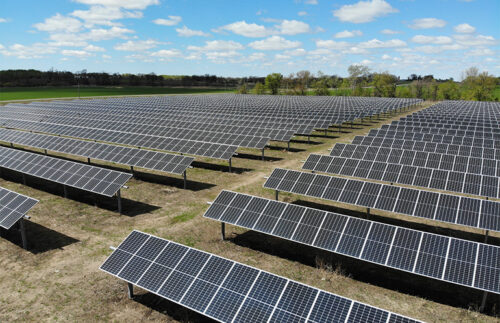
On September 15th, Wisconsin Senator Pat Testin (Republican Stevens Point) and State Representative Scott Krug (Republican Rome) - along with Arch Electric's business development director JD Smith and local landowner and community solar advocate Rick Beyers - proposed a bill to launch a community solar program in Wisconsin. According to WSAU, this is the third meeting proposed by the bill, but the proposers believe they have a strong alliance to pass the bill this time. At present, the power to approve or reject most energy projects is held by the State Public Service Commission (PSC). This top-down model deprives voters of control over the development of local communities. Community solar projects return electricity to local municipal authorities and towns, enabling them to control the site selection and approval of solar projects within their jurisdiction. My voters are tired of these large-scale solar projects covering thousands of acres, and they have no say in them. That's why these projects are small in scale, coupled with local control and supervision, are such an important component of this legislation. Wisconsin residents will directly participate in the approval process for small community solar projects, which can be built on 20 to 30 acres of land, thus preserving land and resources on our family farms, "said Congressman Scott Kruger. Wisconsin is a net energy importing state and currently ranks among the top in energy costs in the Midwest region. By promoting market competition, community solar energy will expand energy choices, control utility spending, and reduce high energy prices. Wisconsin used to have the lowest water and electricity bills in the Midwest, but now our electricity bills are approaching the highest levels, making it difficult for households and businesses to afford skyrocketing costs. This legislation aims to directly address the continuously rising energy prices by expanding locally produced cheap electricity supply. Equally important, it ensures that the community itself takes a leading role and plays a crucial role in determining the location and manner of these projects, "said Senator Pat Testing. Numerous stakeholders from all over Wisconsin have united to support the efforts of Congressman Kruger and Senator Testine to introduce community solar energy in the state. These stakeholders include: Wal Mart Advocate Aurora Health、Organic Valley、RENEW Wisconsin、Associated Builders and Contractors、Land & Liberty Coalition、 Wisconsin Grocery Association, Kohler Faith Technologies、Arch Electric、 Wisconsin Conservative Energy Forum, Wisconsin Department of Agriculture, and Community Solar Access Alliance.
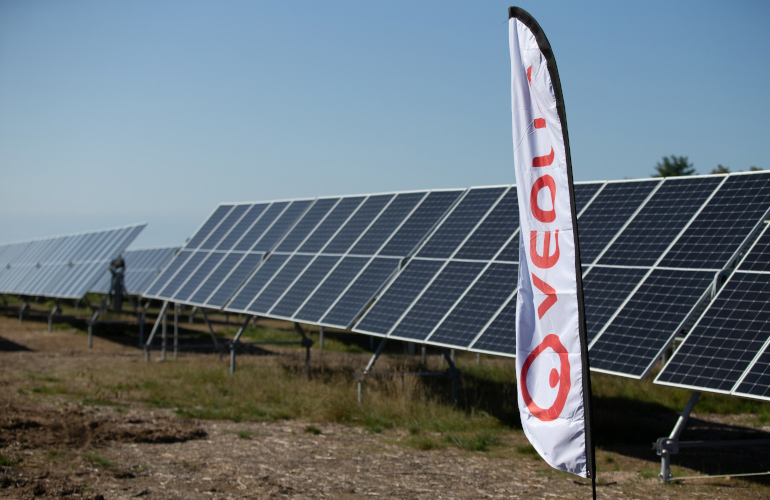
Veolia and Nautilus Solar recently launched a 6.5MW solar installation called the "Exeter Mail" in Exeter, Rhode Island. This solar power plant is one of three solar power plants that supply renewable energy to the Rhode Island power grid, aiming to provide a water and electricity credit for the local housing authority, thereby reducing its operating costs and ultimately lowering energy prices for public housing residents. The project was announced to start construction in 2021 and has now been completed. Three solar power plants are all supplying green energy to the Rhode Island power grid. The collaboration between PHARI, Nautilus, and Veolia will include multiple public housing management agencies in a renewable energy contract. The Exeter Post Power Plant project is the largest of the three projects signed by the Housing Authority. The total power generation of these three projects exceeds 13 megawatts. The electricity market value generated by the three projects will be allocated to nine housing authorities in Rhode Island (Providence, North Providence, Newport, Cranston, Smithfield, Warwick, Warren, Bristol, and Lincoln) in the form of utility bill credit lines. These credit limits will generate discounts related to current electricity supply prices, thereby reducing the operating budget of the housing management bureau. The energy costs in the region are among the highest in the country, and taxpayers and public housing households will benefit from it. These solar power plants are mainly located in Exeter and Smithfield towns, and are expected to save over $35 million in energy costs over the next 20 years. Nautilus is responsible for overseeing the development, licensing, and construction of solar installations. The company will now be responsible for the continuous management, maintenance, and performance of the entire project lifecycle. With its profound knowledge in decarbonization, power optimization, and solar power generation, Veolia has been selected by PHARI to serve as the buyer's agent in cooperation with the housing management department, responsible for managing procurement work, providing technical consulting, and managing complex supplier selection processes. Karin Hamel, President and CEO of Veolia's Sustainable Industries and Buildings business, stated, "Veolia is honored to contribute to this transformative solar project that not only fully harnesses the power of renewable energy, but also directly supports the well-being of thousands of low-income households in Rhode Island. This project aligns with Veolia's GreenUp strategy. Producing local low-carbon energy is a key growth driver for accelerating ecological transformation. This project is a perfect example of using green energy for public welfare.
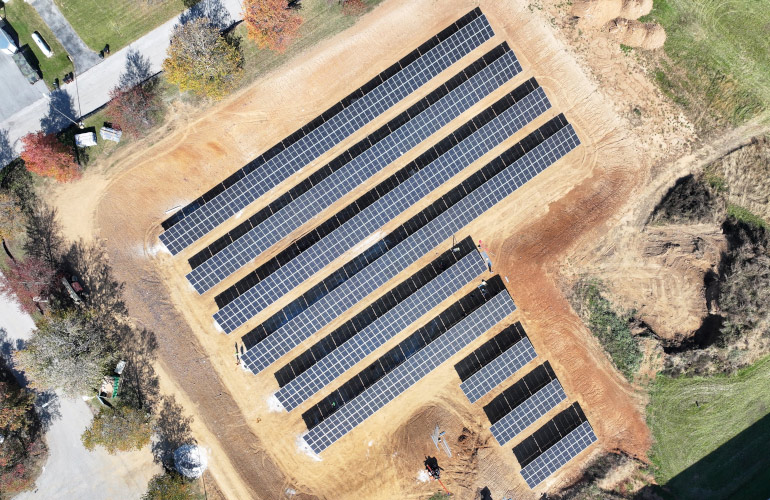
The history of Castle&Key distillery can be traced back to the early 19th century, founded by one of the pioneers of the American spirits industry and located in Frankfurt, Kentucky, at the center of the bourbon whiskey producing region. It is not only known for its handmade spirits, but also for its exquisite craftsmanship. The distillery was built in the late 19th century and its style complements European architectural design, featuring a castle, a spring house, and a sunken garden. The distillery has been carefully restored to showcase its historical heritage. Since its reopening in 2018, the leadership of the distillery has earned a good reputation for its forward-looking, innovative, and modern sustainable development practices. Due to plans to build a new bottling plant near the warehouse in Versailles, the brewery has decided to strategically invest in a large-scale solar photovoltaic project. In addition to reducing Castle&Key's carbon footprint and lowering long-term energy costs, solar energy will also set a precedent for the Kentucky liquor industry to adopt renewable energy. However, integrating photovoltaic services into historical sites faces unique challenges, ranging from aesthetic considerations and protection requirements to practical issues of power generation in production facilities. From concept to final implementation, the entire process requires strategic planning, close collaboration with partners, and creative problem-solving. The timing is crucial as the $2 million grant provided by the US Department of Agriculture's Rural Energy Program (REAP) will expire at the end of the year. Challenge: Integrating modern sustainability into archaeological sites Castle&Key sees the expansion of its bottled business as an excellent opportunity to achieve more sustainable operations. At present, the distillery is served by Louisville Gas and Electric Company and Kentucky Public Utilities, both of which heavily rely on coal and natural gas. The distillery realizes that self generating electricity can achieve cost stability while also having a significant impact on the environment. The brewery collaborates with local installer Solar Energy Solutions (SES) to design and construct on-site systems. From the beginning, the project faced urgent deadline challenges. In order to obtain tax credits and maximize the use of REAP grants, the first half of the solar cell array must be installed, powered on, and inspected before December 31, 2024. The urgency of time means that any delay at any stage - whether it's design, component supply, or utility approval - could jeopardize millions of dollars in fiscal incentives. Technical barriers also urgently need to be addressed. The photovoltaic system must be carefully designed to integrate with the operating system of the brewery and connect to the public grid under strict safety standards, especially considering the flammable spirits stored on site. Only after the inspectors confirm that ...
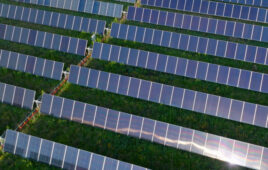
In the first half of 2025, the US solar industry will add nearly 18 gigawatts of installed capacity. Even with a series of anti clean energy policies introduced by the Trump administration, solar and energy storage still account for 82% of the newly added grid electricity within the first six months of the Trump administration's tenure. HR1 and the Trump administration's recent actions against solar energy have significantly reduced their solar deployment forecasts. In the "Q3 2025 US Solar Market Insights" report jointly released by the Solar Energy Industry Association of America (SEIA) and Wood Mackenzie, underestimation forecasts warn that these policies will put the United States at risk of losing 44 gigawatts of solar deployment by 2030, a decrease of 18%. Compared to the forecast before the release of HR1, the United States faces a risk of losing 55 gigawatts of solar deployment by 2030, a decrease of 21%. Solar energy and energy storage are the pillars of America's energy future, delivering most of the new electricity to households and businesses at the lowest cost, "said Abigail Ross Hopper, President and CEO of SEIA. The Trump administration not only failed to unleash the engine of the American economy, but deliberately suppressed investment, which not only pushed up energy costs for households and businesses, but also endangered the reliability of our power grid. However, no matter what policies this administration introduces, the solar and energy storage industries will continue to grow because the market needs the products we provide: reliable, affordable, and American made energy The report found that 77% of all solar capacity installed this year was built in states won by President Donald Trump, including eight of the top ten states for new solar capacity: Texas, Indiana, Arizona, Florida, Ohio, Missouri, Kentucky, and Arkansas. In the first half of 2025, the United States will add 13 gigawatts of solar module production capacity, with new or expanded factories in Texas, Indiana, and Minnesota. At present, the total production capacity of solar modules in the United States has reached 55 gigawatts. However, due to federal policies that may hinder the development momentum of the US solar manufacturing industry and jeopardize billions of dollars in private capital, there were no new upstream manufacturing investments in the second quarter. The report shows that by 2030, solar deployment is expected to be 4% lower than the baseline scenario before HR1. The recent deployment has been driven by factors such as ongoing projects, eagerness to meet tax credit deadlines, and increasing demand for electricity as new natural gas power generation becomes more expensive and less available. This low value forecast provides a detailed explanation of the potential damage that recent administrative actions may cause to the solar energy industry. According to the report, the actions of the Department of the Interior are expected to affect approximat...
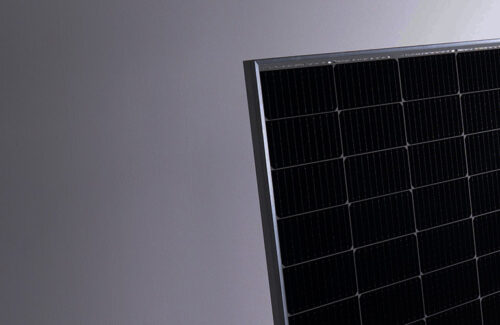
Nextracer has entered the solar panel frame market by acquiring Origami Solar, a manufacturer of rolled steel frames, through an all cash transaction of approximately $53 million. Nextracer founder and CEO Dan Shugar said, "For 45 years, solar panel frame technology has remained largely unchanged. During this period, the size and dynamic wind load of solar panels have increased sharply, especially in utility scale tracking applications. From a structural engineering perspective, the transition from aluminum to steel is of great significance - steel has higher strength, more competitive cost, and significantly reduced carbon emission intensity. Most importantly, it helps open up localized production opportunities from steel coils to final manufacturing, while bringing tangible benefits to customers such as faster panel installation and better long-term system performance. In the United States alone, the potential market value is estimated to exceed $750 million, and we believe this is important for Nextracer. For rackers, it is a huge new business opportunity. ” Origami's framework design has undergone four years of development and improvement, and has passed third-party laboratory testing certification. Origami's frame is designed to replace traditional aluminum frames, with dimensions consistent with industry standard sizes. Nextracer stated in a press release that the company is considering new panel installation methods, such as robot assembly, which may be applicable to steel frames. Gregg Patterson, CEO of Origami Solar, stated, "Origami Solar was founded with the aim of promoting the commercialization of steel frame technology and realizing the customer value and benefits that this new technology can bring. Our team has addressed key challenges in design, performance, and mass production. By partnering with Nextracer, we have the opportunity to leverage its global supply chain ecosystem and deep customer relationships to scale this innovation faster and commercialize this truly impactful solution

Eaton, an intelligent power management company, announced that it is collaborating with Xendee to develop a design and operation platform for distributed energy and microgrid systems. This collaboration combines Eaton's microgrid hardware and engineering service capabilities with Xendee's artificial intelligence model predictive control software, which continuously evaluates and optimizes microgrid systems using alternative solutions predicted by artificial intelligence. Xendee's solution is hardware agnostic, enabling distributed energy (DER) operators to manage over 27 different types of technologies, including solar energy, battery storage systems, nuclear energy, linear generators, and cogeneration. This solution will enable real-time operational adjustments of microgrid systems, significantly saving costs, enhancing resilience, reducing emissions, and extending equipment lifespan. Angie McMillin, President of Eaton Energy Solutions and Services, said, "Working with Xendee, we are exploring new ways to help customers maximize the functionality and value of their microgrid investments in North America and Europe. We believe that combining Eaton's mature expertise in microgrids, intelligent power management solutions, and services with Xendee's advanced digital optimization technology will help microgrid operators better seize the opportunities brought by energy transformation
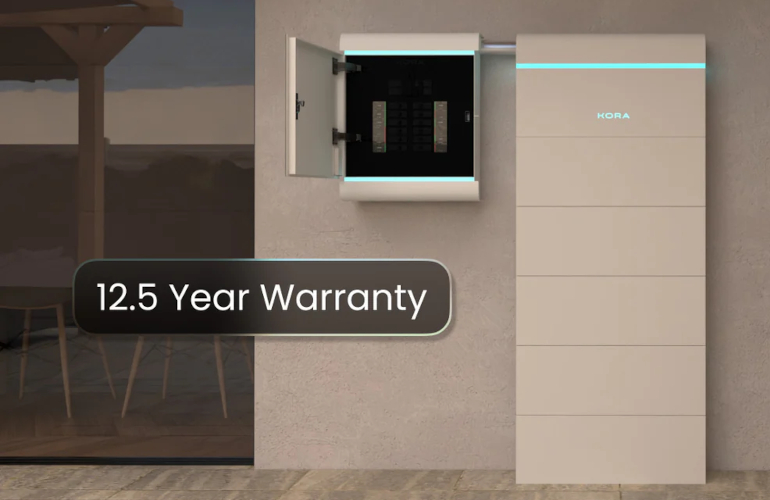
Kora has launched a home energy system that integrates smart panels, batteries, inverters, applications, and a virtual power plant platform. The company has secured financing from Moneta Ventures and Growth Factory Ventures and plans to begin shipping to customers in the first quarter of 2026. In addition to providing circuit level control through smart panels, the Kora system also allows homeowners to sell electricity in wholesale markets through the company's VPP Kora energy trading platform. The Kora application integrates the entire stack, panel, inverter, and battery into a system that automatically transfers loads to cheaper sources of electricity, stores energy when electricity prices are low, and prioritizes solar energy. Before founding Kora, I tried several leading home energy systems. Their user experience is poor, the devices are expensive, and the features are limited, "said Greg Connoly, founder and CEO of Kora. Our original intention in founding Kora was to bring the entire industry into the era of artificial intelligence through a system, allowing homeowners to truly control energy from day one, obtain reliable backups, and automatically reduce bills. ” The energy storage system can be expanded to 111.2 kWh and supports 91.2 kW of power. The main components of the energy storage system are covered by a 12.5 year warranty period.

PV Hardware USA, a provider of solar tracking and basic solutions, has opened its second manufacturing plant in the United States in Houston. This 95000 square foot factory has expanded PVH USA's business presence in the United States and created over 100 job opportunities for the local community. The new factory was officially put into operation in July this year. Previously, the company invested $30 million to build its first manufacturing plant in the United States, which officially opened in Houston in May 2024, becoming one of the largest solar tracker manufacturing plants in the United States. The opening of our second US manufacturing plant is an exciting step in our development journey and demonstrates our commitment to the US market, "said Rodolfo Bitar, Vice President of Business Development at PVH in the United States." By expanding our business in Houston, we are not only investing in local economic development, but also ensuring that we can better serve our customers with faster turnaround times and 100% domestically produced highest quality products PVH was founded in 2008 and is headquartered in San Francisco. It has developed solar tracking technology that can adapt to different terrains, slopes, and climates. These trackers use proprietary pre assembly processes aimed at reducing installation time.
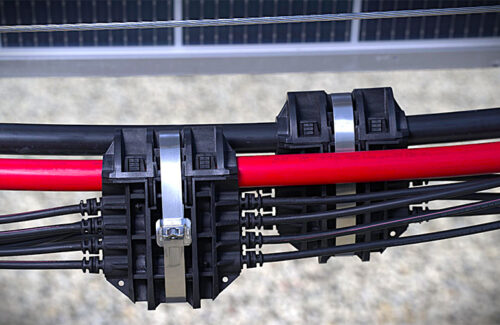
Nextracer has launched its proprietary NX PowerMerge backbone connector, a DC power component designed to simplify the installation of electrical balance systems (eBOS). This is the first new feature added to the eBOS platform by Nextracer since its acquisition of Bentek this year. Nextracer founder and CEO Dan Shugar said, "We are pleased to launch NX PowerMerge to advance the electrical architecture of solar power plants. Customers will benefit from faster and more flexible construction, higher reliability, and compatibility with modern grid characteristics. This highly scalable technology can help solar energy continue to expand its share in the global power generation market. ” Compared to traditional backbone systems, NX PowerMerge uses fewer connections and simplified installation processes to establish secure power distribution paths in the tracker array. NX PowerMerge is designed to be compatible with all utility scale solar trackers and fixed tilt systems, tested to withstand extreme environmental conditions, and can be integrated with Nextracer's NX Horizon solar tracking system. The NX PowerMerge backbone connector is now available and will begin shipping in the spring of 2026, offering the option of manufacturing domestically in the United States. NX PowerMerge is a photovoltaic string to main busbar connection solution suitable for 2 kV voltage. Its current carrying capacity exceeds 400 A, supports up to 8 tap wires (6 to 8 AWG), and is compatible with backbone wires up to 1000 kcmil. The system also uses gel free sealing technology to make the installation cleaner. Nextracer will showcase its complete technology platform, including NX PowerMerge, at booth V9223 at the Venetian Hotel RE+2025 in Las Vegas from September 8th to 11th.
Categories
New Products
Tin Roof Rapid Solar Mounting System with Hanger Bolt Read More
Residential Small Solar Easy Bracket Kit for Home Balcony Read More
Automatic Single Pile Solar Tracker with 10 PV Panels Read More
Angle Adjustable Aluminum Easy Solar Panel Bracket for Garden Read More
Intelligent Single Post Dual Row Solar Tracking System Read More
5000ES Solar Off-Grid Energy Storage Inverter Supplier Read More
Multi Drive Double-Sided Single Axis Tracker System Read More
© Copyright: 2026 Xiamen Wintop New Energy Tech Co., Ltd.. All Rights Reserved.

IPv6 network supported
Friendly Links:
Integrated Solar System